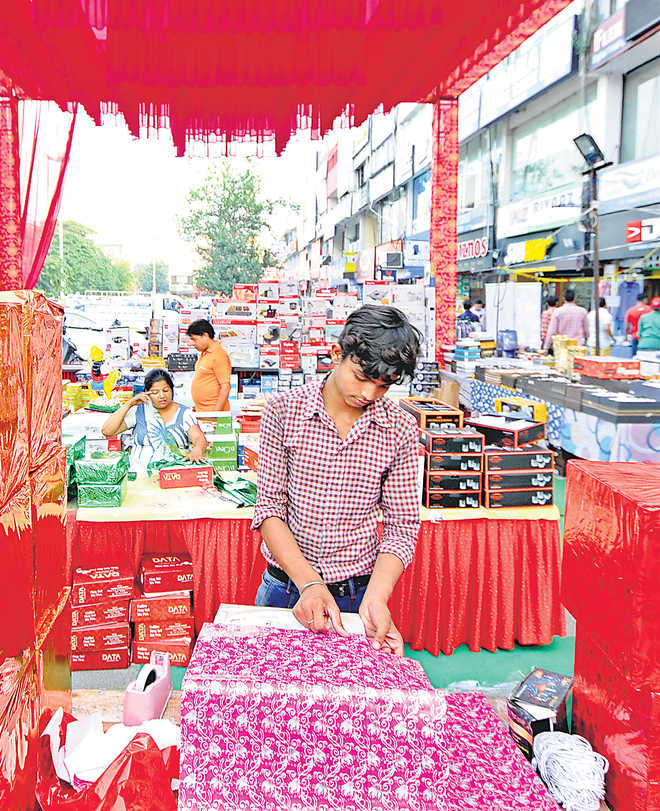
A worker packs gift items at Phase 3B2
Smridhi Chawla In Chandigarh
Forget the run-down houses and unpaved lanes — there is a clear hint of life bursting forth at Kumhaar Colony in Chandigarh’s Sector 25. Men, women and children are busy kneading and mixing clay; they have sieves through which the clay must pass for some shape to take place; there are many hues and forms of diyas and earthen kandeels. A little before dawn, the potter’s wheel would stop for a while. Men would chat in a huddle, and women would rest. They would be back in a few hours.
Sun-baked Sarbati, who has been living in the colony for 40 years, places diyas of various shapes in the sunlight. “Pottery is our parampara (tradition),” she says, as her son Mukesh applies adhesive on small earthen pots.
Their work is back-breaking. “First, we mix and grind mud, sieve it, make it compact and then knead it with bare hands and feet. After putting it on the wheel, it is dried and baked. This fetches us almost nothing,” says Mukesh.
For 1,000 small diyas, a middleman pays them only Rs 500: 50 paise a diya. In the market, the same diya is sold for Rs 2. There’s a 300% appreciation in the price as diyas pass through the hands of middlemen. For a big diya, many like Mukesh get Rs 5 and it fetches Rs 15 in the market.
“I have spent about 60 years in this trade. Our hard work and art is worth nothing. We don’t make profits,” says an elderly potter. Another “kumhaar” working nearby says the potters like him make diyas day and night for almost a month and treat each one like a child. “But they are sold for just a few rupees.” During Diwali, they make 35 to 40 lakh diyas.
For many years they have had to battle another threat: invasion of Chinese electric lights. “The traditional diyas are being replaced. The demand for our products has fallen. Only last year the demand picked up a little,” says Chandan.
Surinder has had quite a day. After work since morning, he sits in a charpoy and gets ready to sell kulfi. Mukesh works as a fruit and vegetable vendor. Others work as daily wagers. “The art has passed through generations, but we are not sure if we would continue the tradition,” says Mukesh, a third-generation potter.
Tanu (6) and Urvashi (8) are cousins. They decorate earthen pots with embroidered laces and gota in a dimly-lit small room; they seem to enjoy the work. Their mothers are busy cooking food. They hope to break free from the non-profitable venture for a “bright” future of their daughters. Urvashi wants to be a doctor and Tanu a teacher.



























